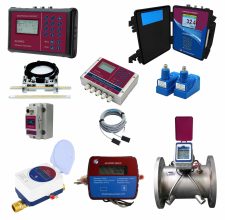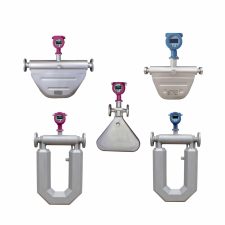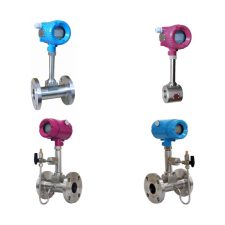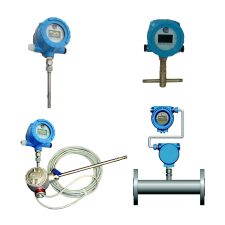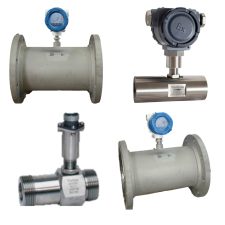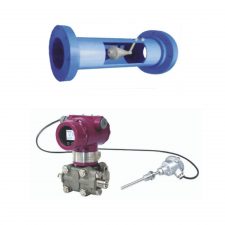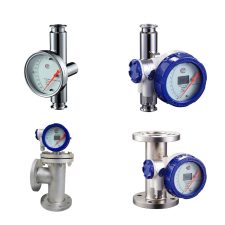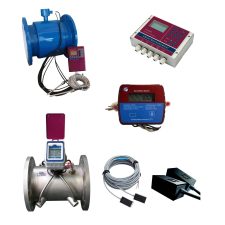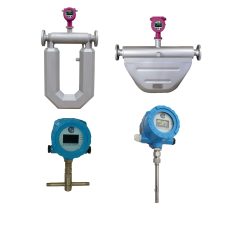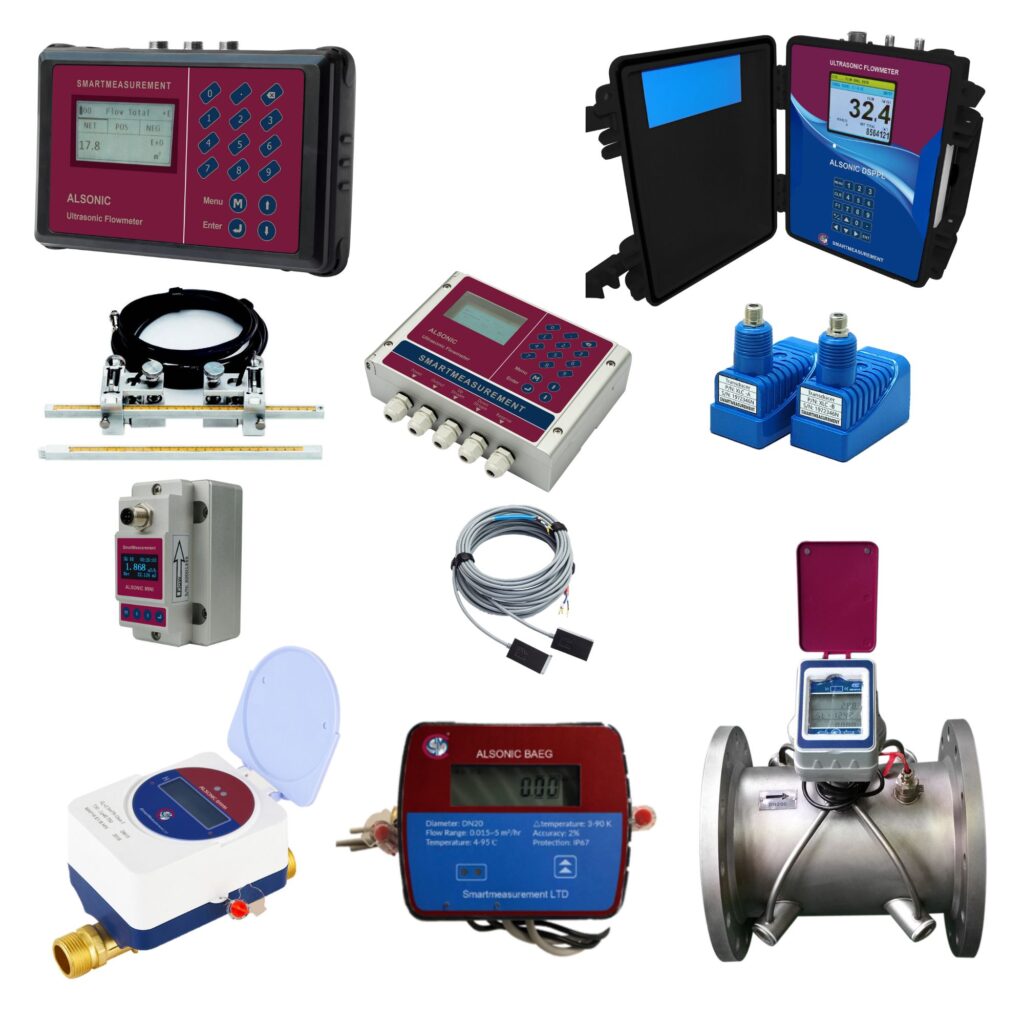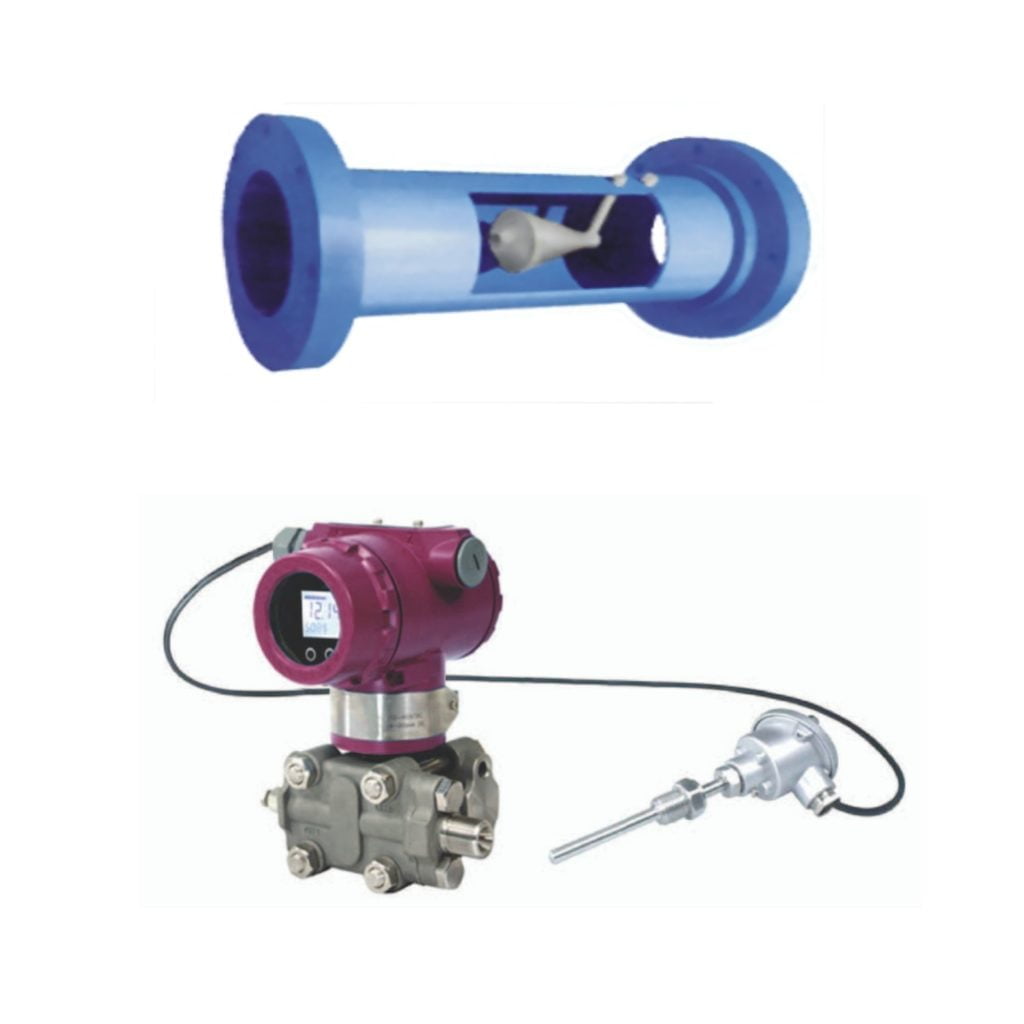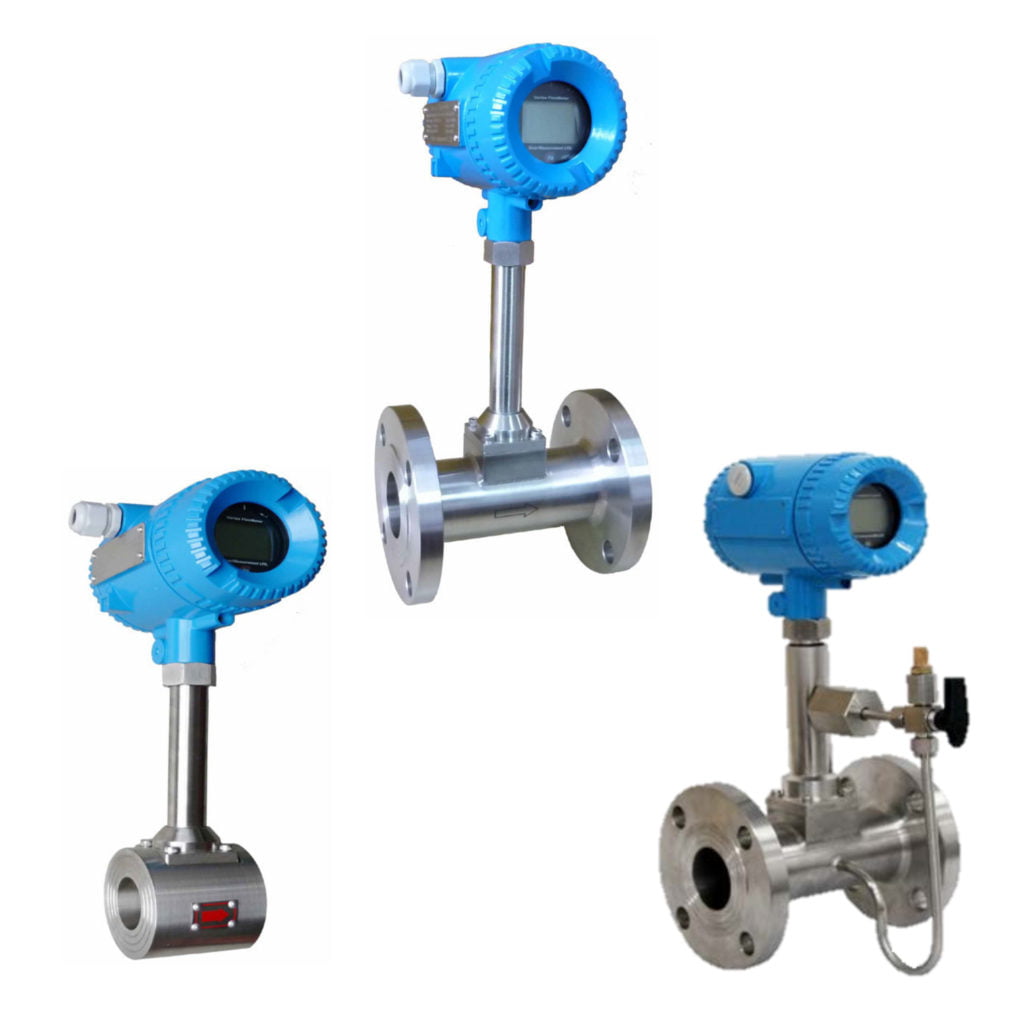Featured Flow Meters
ALSONIC Series
ALSONIC series employ both transit time and Doppler ultrasonic flow measurement techniques to allow for non-invasive clamp-on and inline installation in liquid flow measurement applications.
Applications
Non-intrusive liquid flow measurement in water treatment plants, irrigation systems, residential & commercial HVAC, and monitoring flow in large diameter pipes.
ALMAG Series
ALMAG series provide the best value for accurate, maintenance-free flow rate measurement for conductive liquids such as water.
Applications
Wastewater management, chemical processing, mining operations, factory automation/industrial process control, and pulp and paper industries.
ALCM Series
ALCM series provide high-accuracy mass flow measurement and the ability to simultaneously measure media density, temperature, % concentration, volumetric flow, and mass flow.
Applications
Oil & gas custody transfer, petrochemical refineries, pharmaceutical manufacturing, food & beverage, fluoride injection at municipal water plants, and any application requiring both mass flow and density measurement.
ALPD Series
Engineered for high viscosity fluids in industries such as oil & gas and marine, offering accurate flow measurement regardless of fluid viscosity.
Applications
Oil & gas industry, marine industry, high viscosity fluid measurement for fluids such as oils, inks and syrups, hydraulic systems, and fuel consumption monitoring.
ALVT Series
Accurate steam, gas, and liquid flow measurement in power generation and chemical plants, utilizing vortex shedding technology for robust and reliable performance.
Applications
Steam flow measurement, gas and air monitoring in power generation, including fossil fuel plants, chemical plants, and ultra-high temperature steam, liquid, and gas flow measurement applications.
ATMF Series
Direct mass flow measurement for gases in industrial automation and HVAC, specially designed for measuring low-pressure compressed gases with excellent accuracy.
Applications
Any compressed gas application requiring mass flow measurement such as compressed gas flow measurement, fuels, flares, stack gas in industrial automation, HVAC systems, and environmental monitoring.
ALTM Series
Optimized for clean, low viscosity liquid flow measurement in water distribution and light fuel metering, providing reliable and precise flow data.
Applications
Clean, low viscosity liquid flow measurement in water distribution, and light fuel metering.
ALDP Series
Versatile flow measurement solution for liquids, gases, and steam in conjunction with primary elements, ideal for the oil & gas industry and process control.
Applications
Liquid, gas, and steam flow measurement when used in conjunction with primary elements such as orifice plates, venturis, and V-Cones, oil & gas industry, industrial process control, HVAC.
ALVAMT Series
Simple, effective flow measurement of clean fluids, suitable for high-pressure and hazardous environments where electrical power is not available.
Applications
Flow measurement for clean fluids in smaller lintel sizes, applications where electrical power is not available, higher pressure applications where a glass tube rotameter is not suitable.
Critical for energy management in heating and cooling systems, optimizing energy consumption in building automation for efficiency and cost savings.
Applications
Energy management in heating and cooling systems, residential and commercial building automation.
Precision chemical injection and gas flow measurement in the oil & gas and pharmaceutical industries, ensuring precise dosing and efficient process management.
Applications
Chemical injection, gas flow measurement in oil and gas industry, and process control in pharmaceutical production.
Accurate flow measurement in open channels, vital for water management in wastewater treatment, stormwater monitoring, and irrigation systems.
Applications
Open channel flow measurement in wastewater treatment, stormwater monitoring, and irrigation channels.
Flow Meters By Fluid
Overview of Flow Measurement
Flow meters are commonly used in a number of industries, including manufacturing, water treatment, energy management, and pharmaceuticals. They are pivotal in delivering critical data for process control, efficiency optimization, and ensuring safety. Each flow meter type functions on unique scientific principles, making each respective meter type suitable for a variety of applications. This section is designed to navigate you through the diverse technologies behind our flow meters. We aim to help you understand each flow measurement technology’s principle of operation and identify the most suitable type(s) for your specific needs.
How To Choose A Flow Meter: Key Considerations
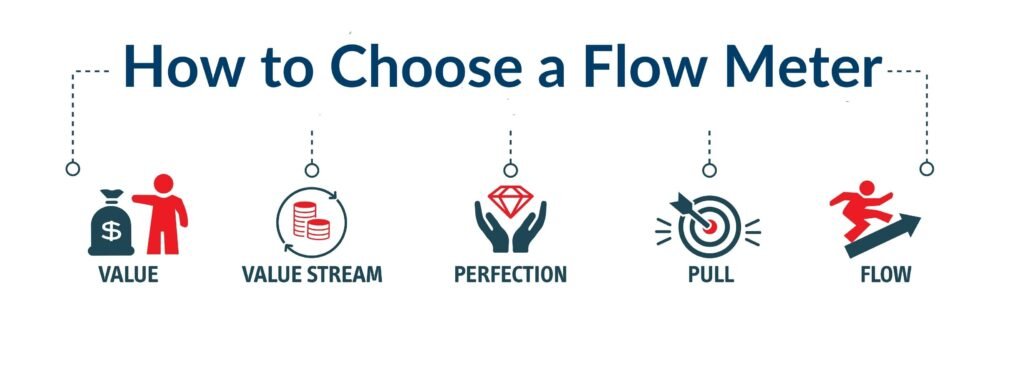
Reliability Factors
- Are there moving parts in the sensing element that might need regular maintenance?
- Does the meter use analog transducers that could drift over time?
Application Parameters Match
- Check if the meter’s specifications (pipe size, flow rates, pressure, temperature) align with your specific application needs.
Accuracy and Flow Rate
- High accuracy: Essential for liquids (0.1% accuracy) and gases/steam (0.5% accuracy).
- Standard accuracy: Suitable for most industrial applications (0.5% for liquids, 1.5% for gases/steam).
- Economical accuracy: Ideal for less critical applications (>1% for liquids, >2% for gases/steam).
- Turndown Ratio: Understand the meter’s rangeability – the higher the turndown ratio, the better the meter’s low-flow performance will be.
Piping and Installation
- Ensure a sufficient straight-run pipe for meters sensitive to flow turbulence.
- Check the straight-run requirements specific to your chosen flow meter technology.
Fluid and Flow Characteristics
Understanding the characteristics of fluids and flow is crucial for the accurate operation and maintenance of flow meters. Here are the key points:
- Viscosity and Density: The fluid’s viscosity (resistance to flow) and density (mass per unit volume) significantly impact flow characteristics and meter accuracy. Changes in these properties can alter the flow profile and affect calibration.
- Flow Regime: Distinguish between laminar (smooth, layered flow) and turbulent (chaotic, swirling motions) flow. The flow regime, often determined by the Reynolds number, influences the predictability and measurement challenges of the flow.
- Pressure and Velocity: Pressure (force per unit area) and velocity (speed of fluid movement) are critical factors. Pressure changes and velocity profiles, which can vary with pipe geometry and flow type, must be considered to ensure accurate flow rate calculations.
- Reynolds Number: This dimensionless quantity helps predict whether the flow will be laminar or turbulent, guiding the selection and operation of the flow meter to ensure it is suitable for the application.
Budgeting
- Flow meters come in a wide price range; balance your performance requirements with the available budget.
- Review pricing charts for an estimate based on flow meter technology and industry application.
Technology Suitability
- Verify that the materials of construction for the wetted components of the selected meter are chemically compatible with the fluid media (liquid, gas, steam) to be measured
- Consider media properties such as viscosity, density, and particle count.
Old vs. New Technologies
- Traditional technologies like turbines or differential pressure meters are reliable but may require higher maintenance due to mechanical parts.
- Modern technologies like ultrasonic meters typically have lower overall maintenance and ownership costs.
Avoiding Unfavorable Conditions
- Be aware of conditions that are not suitable for your chosen technology (e.g., excessive vibration, high suspended solids count)
Maintaining Your Flow Meter
Maintaining Your Flow Meter Proper maintenance of your flow meter is crucial for ensuring accurate and reliable measurements over its lifespan. Here are some key considerations and steps to maintain your flow meter effectively:
1. Regular Inspection
Visual Checks: Regularly inspect the flow meter for any signs of wear, corrosion, or damage. Check for leaks, loose connections, and ensure that all components are securely fastened.
Cleaning: Clean the flow meter and its surroundings to prevent the buildup of debris or contaminants that could affect measurement accuracy.
2. Calibration
Periodic Calibration: Calibrate your flow meter periodically to ensure it remains accurate. The frequency of calibration depends on the type of flow meter and its application. For example, meters with moving parts may require more frequent calibration than those without.
Certification: Ensure that any calibration is performed by certified technicians using traceable standards.
3. Maintenance of Moving Parts
Lubrication: For flow meters with moving parts, such as turbine or positive displacement meters, regular lubrication is essential to reduce wear and tear.
Replacement: Replace worn-out parts promptly to avoid degradation in measurement accuracy.
4. Environmental Considerations
Temperature and Pressure: Ensure that the flow meter operates within its specified temperature and pressure ranges. Extreme conditions can affect accuracy and longevity.
Vibration and Noise: Minimize exposure to excessive vibration and noise, which can impact the meter’s performance and longevity, especially for sensitive technologies like Coriolis meters .
5. Installation and Straight-Run Requirements
Straight-Run Compliance: Ensure that the flow meter is installed in compliance with the required straight-run lengths to avoid turbulence and ensure laminar flow, which is critical for accurate measurements
Pipe Conditions: Maintain the pipe conditions as specified for the flow meter. For example, ensure there are no obstructions or bends that could disrupt the flow profile.
6. Software and Firmware Updates
Software Updates: Regularly update the software and firmware of electronic flow meters to ensure you have the latest features and corrections.
Data Validation: Validate the data output from the flow meter to ensure it aligns with expected values and process conditions.
7. Documentation and Records
Maintenance Logs: Keep detailed logs of all maintenance activities, including inspections, calibrations, and repairs.
User Manuals: Refer to the user manual provided by the manufacturer for specific maintenance instructions tailored to your flow meter model.
8. Professional Assistance
Application Engineers: If you are unsure about any aspect of maintaining your flow meter, consult with the application engineers from the manufacturer. They can provide guidance specific to your application and flow meter technology .
By following these maintenance guidelines, you can ensure your flow meter operates reliably, maintains its accuracy, and extends its lifespan.
Configuring a Flow Meter
In each SmartMeasurement product data sheet, the top of page four is reserved for customers to input their process conditions for evaluation. The following information MUST be evaluated in order to choose the best flow meter for your application. After an ideal flow measurement technology is identified using the table below, the information at the top of page 4 of the corresponding data sheet needs to be completed in order to narrow the selection down to a specific model code. This information typically consists of:
1. The Name and Phase of the Fluid Media
A) Liquid – all flow meters can measure liquids except thermal
B) Gas – Thermal, vortex, Differential Pressure, Coriolis and some ultrasonic
C) Steam – Vortex and Differential Pressure
2. The Pipe Diameter or Channel Size
3. Operating Conditions
A) Flow rate (maximum to minimum)
B) Gas – Pressure drop (maximum to minimum)
C) Temperature (maximum to minimum)
SmartMeasurement’s application engineers can help to determine the best technology for your application and put together a specific model code.
Please go to:
Please see The Best Flow Technologies For Each Fluid State Download
